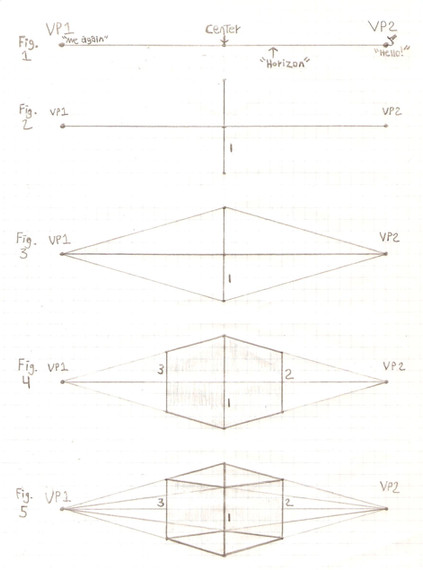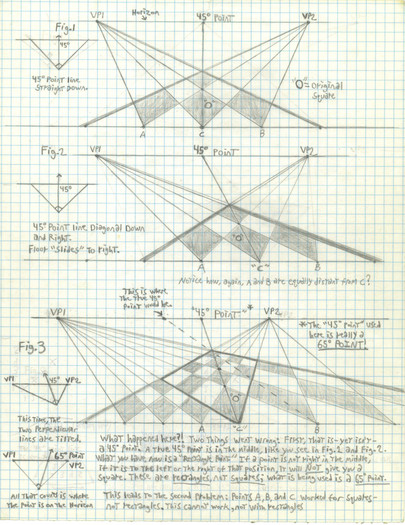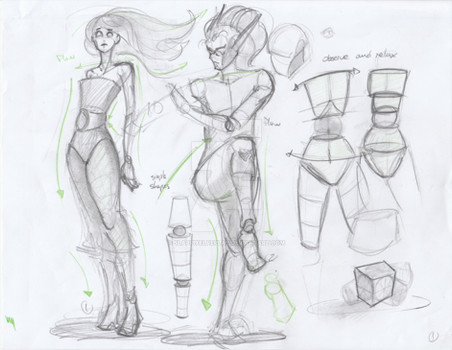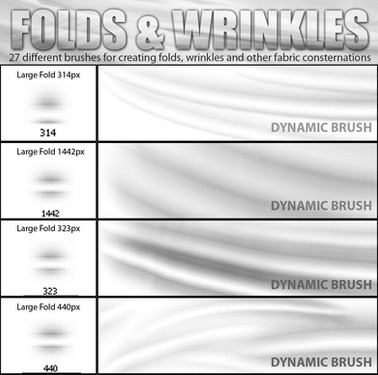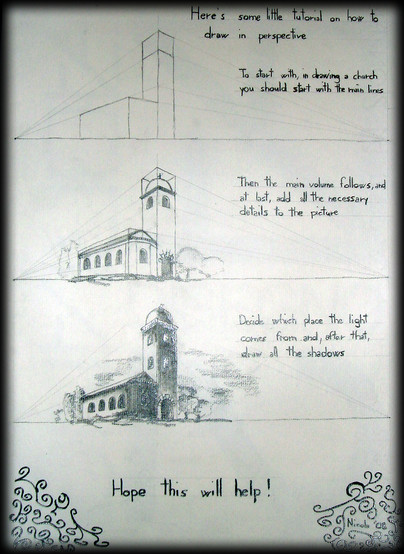HOME | DD
 GriswaldTerrastone — Size and Distance
GriswaldTerrastone — Size and Distance

Published: 2011-01-11 19:51:33 +0000 UTC; Views: 2544; Favourites: 32; Downloads: 114
Redirect to original
Description
One problem an artist can run into is something like this: how to draw, say, a street or hallway with a number of folks? Where should their feet go? How much smaller- or bigger!- should they be based on distance?One way to deal with this is the use of a vanishing point.
First, I drew a basic scene: horizon, diagonal lines- just something quick and basic. The horizon was the really important thing.
The Vanishing Point is where one is actually looking here.
This time I started by drawing Fox 1 on the right there. Once he was drawn in I had something to base everything else on; since size is relative you often need something to use as a yardstick for everything else.
Now...I drew lines from the Vanishing Point to the top of Fox 1's head and through his feet, Lines A and D.
I added a few extras: neck (B), waist (C), knees (F), etc...
You now have reference points!
Once this was done, it was easy to draw Fox 2: all I had to do was draw him so those lines would go through whatever they went through with Fox 1. If a line went through Fox 1's knees, then it should do so for Fox 2's. Fox 2 should be drawn within Lines A and D- like Fox 1 was.
There's something else, too: look at the horizon. See how it goes through the chest of both Fox 1 AND Fox 2? This is not unusual, if dealing with characters of the same height, on a flat surface, the horizon will go through the same portion on all of them- just like here.
Once this was done, I added a mini-Dragon, who happened to be about half as high as Fox 1. Line C touches the top of his head.
Draw the other one, `way back, the same way.
So- there are now two Foxes, one close, one further away. What if you want one out of line, who would be off to the side?
All you need to do is figure how big and where such a character would be between those lines, Lines A and D. In this case, I used Fox 1 for reference.
And so...Fox 3!
If you slide him over to the right, he should touch the same lines in the same way as Fox 1. Also notice how the horizon goes through his chest, too?
And there you have it...so far...
The next question you might have is: o.k., this shows me how to shrink or expand something as it moves closer or further away...but how do you actually make it look like it's actually STANDING on the surface? What if I want it to float? What would happen if I simply raised Fox 1 up a couple of inches?
Good question.
Part of art is to reflect experience, to imply. If on a blank sheet of paper you draw a human just standing , most people would "see" him standing- even though he's in a void.
If you drew him with a rocketpack, jets of flame shooting from it, and he had his arms up while looking upward, you'd tend to "see" him flying- even though everything around him is blank.
So if I just drew Fox 1 and nothing else, you'd tend to "see" him standing- even if nothing is there to stand on!
Likewise if I drew the mini-Dragon flying...you'd see him flying.
But that's only part of it, really. What if someone is standing, hands in pockets, but is a wizard and is hovering off the floor?
If you drew a tavern scene around Fox 1, and a table to his left, how would you know if he's standing right next to it...or if he looks like he's next to it because he's floating?
One way is to use shadows. If you look at the bottom part of this page, you'll see two pictures that are very much the same- except for the shadows under the Foxes.
On the left he looks like he's standing, because he's touching his shadow...while on the right, merely by moving that shadow down a bit, it now looks like he's floating!
If you had him floating by a window, the very fact that there is no floor to be seen under him indicates that he is hovering.
In the top part, I added shadows, and for all characters they touch, so it looks like they are STANDING...except for Fox 3.
Since his shadow is below him a bit, not touching, it looks like he is floating, does it not? In fact, it almost looks as if he is not on the same level as Fox 1, although they are!
Quick Extra: are you wondering about something- based on what you know about things moving closer or further away, and where Fox 3's shadow is...?
If you are wondering: Hey, look at where Fox 3's shadow is, and where Fox 1's shadow is. If they are both directly underneath both Foxes, then if they were both standing, wouldn't Fox 3 be closer?
Shouldn't then Fox 3 be drawn bigger- and couldn't you use Lines A and D to figure out how big he should be, by sliding the shadow to the right, so Line D goes through it?
Exactly, if they are supposed to be the same size.
And if you asked that, then you really understand how all of this works! Congratulations!





Related content
Comments: 1

I had to use TWO computers here to get this one up- the other one kept crashing, and it is the one with the scanner!
👍: 0 ⏩: 0

